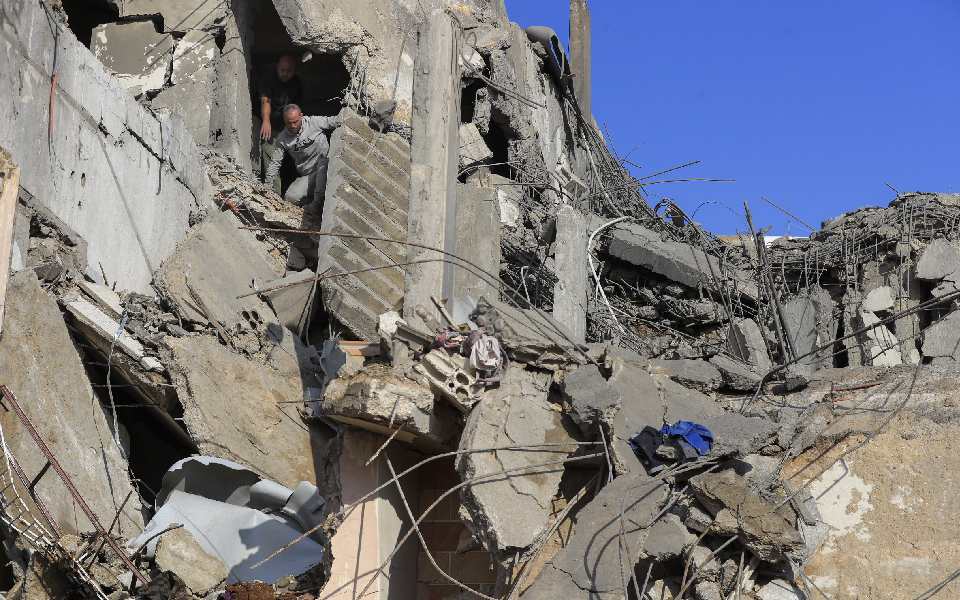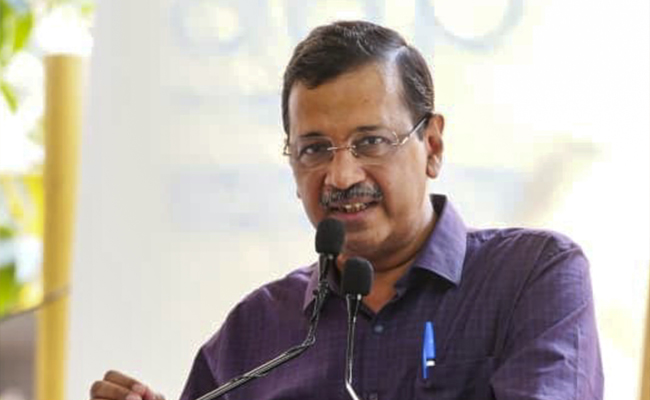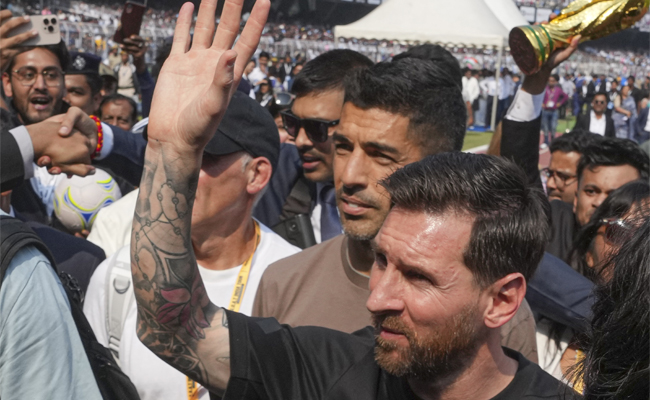Deir al-Balah, Apr 18 (AP): Israeli airstrikes across Gaza killed at least 17 people early Friday including children, hospital workers said, as the new US ambassador to Israel made his first public appearance in Jerusalem.
Among the dead were 10 people in Jabaliya, including eight from the same house, according to the Indonesian Hospital, which received the bodies.
In the southern city of Khan Younis, seven people were killed, one of them a pregnant woman, according to Nasser Hospital, where the bodies were brought.
The strikes came a day after more than two dozen people died in Gaza as Israel ramps up attacks, pressuring Hamas to return the hostages and disarm.
US Ambassador to Israel Mike Huckabee on Friday appeared at the Western Wall, the holiest Jewish prayer site in Jerusalem's Old City. Huckabee inserted a prayer into the wall, which he said was handwritten by US President Donald Trump. "Those are his initials, D.T.,“ said Huckabee while showing the note to the media.
In his first act as ambassador, Huckabee said Trump told him to pray for the peace of Jerusalem. Huckabee also said every effort was being made to bring the remaining hostages held by Hamas home. A one-time presidential hopeful, Huckabee has acknowledged his past support for Israel's right to annex the West Bank and incorporate its Palestinian population into Israel but said it would not be his “prerogative” to carry out that policy.
During his first term, Trump recognised Jerusalem as Israel's capital over Palestinian objections and moved the embassy from Tel Aviv. Palestinian seek the eastern part of the city that Israel captured in the 1967 Mideast war as their future capital.
Huckabee's arrival comes at a pivotal time in the 18-month war, as international mediators including the US are trying to get a broken ceasefire back on track.
Israel is demanding that Hamas release more hostages at the start of any new ceasefire and ultimately agree to disarm and leave the territory. Israel has said it plans to occupy large “security zones” inside Gaza.
Khalil al-Hayya, head of Hamas' negotiating delegation, said Thursday the group had rejected Israel's latest proposal along those lines. He reiterated Hamas' stance that it will return hostages only in exchange for the release of more Palestinian prisoners, a full Israeli withdrawal from Gaza and a lasting truce, as called for in the now-defunct ceasefire agreement reached in January.
Hamas currently holds 59 hostages, 24 of whom are believed to be alive.
The war began when Hamas-led group attacked southern Israel on October 7, 2023, killing some 1,200 people, mostly civilians, and abducting 251. Most of the hostages have since been released in ceasefire agreements or other deals.
Israel's offensive has since killed over 51,000 Palestinians, mostly women and children, according to Gaza's Health Ministry, which does not distinguish between civilians and combatants.
The war has destroyed vast parts of Gaza and most of its food production capabilities. The war has displaced around 90 per cent of the population, with hundreds of thousands of people living in tent camps and bombed-out buildings.
On Thursday, aid groups raised the alarm over Israel's blockade of of Gaza, where it has barred entry of all food and other goods for more than six weeks.
Thousands of children have become malnourished, and most people are barely eating one meal a day as stocks dwindle, the United Nations said.
Israel's Defence Minister says the blockade is one of the “central pressure tactics” against Hamas, which Israel accuses of siphoning off aid to maintain its rule. Aid workers deny there is significant diversion of aid, saying the UN closely monitors distribution. Rights groups have called it a “starvation tactic.”
Let the Truth be known. If you read VB and like VB, please be a VB Supporter and Help us deliver the Truth to one and all.
Panaji (PTI): As part of a crackdown against tourist establishments violating laws and safety norms in the aftermath of the Arpora fire tragedy, Goa authorities on Saturday sealed a renowned club at Vagator and revoked the fire department NOC of another club.
Cafe CO2 Goa, located on a cliff overlooking the Arabian Sea at Vagator beach in North Goa, was sealed. The move came two days after Goya Club, also in Vagator, was shut down for alleged violations of rules.
Elsewhere, campaigning for local body polls, AAP leader Arvind Kejriwal said the fire incident at Birch by Romeo Lane nightclub at Arpora, which claimed 25 lives on December 6, happened because the BJP government in the state was corrupt.
An inspection of Cafe CO2 Goa by a state government-appointed team revealed that the establishment, with a seating capacity of 250, did not possess a no-objection certificate (NOC) of the Fire and Emergency Services Department. The club, which sits atop Ozrant Cliff, also did not have structural stability, the team found.
The Fire and Emergency Services on Saturday also revoked the NOC issued to Diaz Pool Club and Bar at Anjuna as the fire extinguishers installed in the establishment were found to be inadequate, said divisional fire officer Shripad Gawas.
A notice was issued to Nitin Wadhwa, the partner of the club, he said in the order.
Campaigning at Chimbel village near Panaji in support of his party's Zilla Panchayat election candidate, Aam Aadmi Party leader Kejriwal said the nightclub fire at Arpora happened because of the "corruption of the Pramod Sawant-led state government."
"Why this fire incident happened? I read in the newspapers that the nightclub had no occupancy certificate, no building licence, no excise licence, no construction licence or trade licence. The entire club was illegal but still it was going on," he said.
"How could it go on? Couldn't Pramod Sawant or anyone else see it? I was told that hafta (bribe) was being paid," the former Delhi chief minister said.
A person can not work without bribing officials in the coastal state, Kejriwal said, alleging that officers, MLAs and even ministers are accepting bribes.





